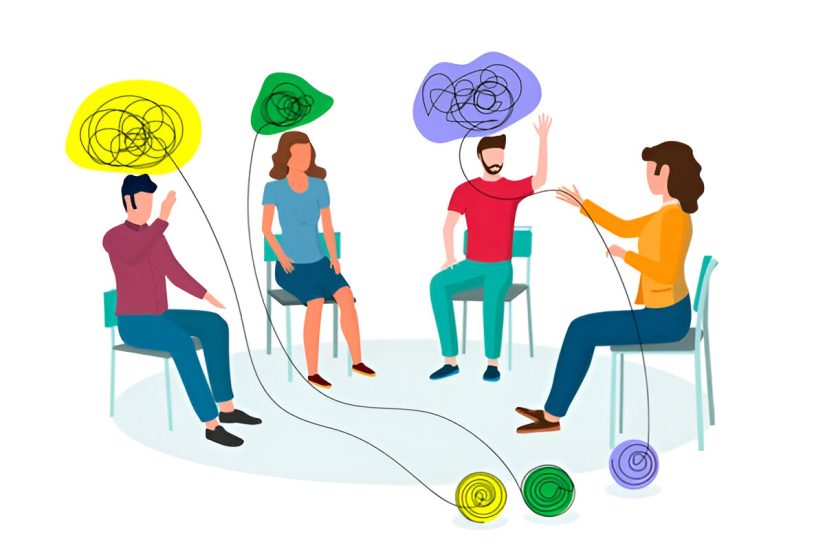- September 8, 2025
- by Harshita Bajaj
- Therapy
The Phenomenological or Adlerian Approach
Alfred Adler is a famous psychologist who is best known for his theory of individual psychology that focuses on the idea that people are primarily motivated by social connection and a drive to overcome feelings of inferiority.
Based on this, the Adlerian approach for therapy has also come about. The basic premise is that human beings are always moving towards the future and striving to be the best selves. This is what Adler called superiority. According to him, whenever there is a discrepancy between the ideal self or the superior self and the present self, it leads to problems. Having unrealistic or unattainable goals leads to self-defeating behaviors and discouragement which leads to neurosis, psychosis, substance abuse, hormonal behaviors, suicide, maladaptive behavior, etc.
View of human nature
According to Adler, the present interpretation of our childhood events were more important than the childhood experiences in itself. He believed that people are motivated highly by social interest and being part of the human community is critical.
Good mental health, according to him, is how we successfully share relations with others and are concerned with their welfare. Happiness and success are seen as a result of social connections.
He also spoke about how each person has the need to be successful and strives for wholeness and growth. He placed special emphasis on birth order and sibling relationships. For example, the oldest child is more spoiled as they receive more attention. The second child of two behaves that they are often in a race and competing with the first child. The middle child often feels squeezed out, whereas the youngest is considered as the baby. Whereas, an only child is someone who does not learn how to share or cooperate with other children or adults.
Adlerian Therapy
In Adlerian therapy, the counsellor plays an important role of being a diagnostician as they try to assess why their clients are oriented in a certain way of thinking and behaving. The counsellor takes all the information from the client regarding the family histories, childhood experiences, present experiences, the earliest memories, and then shares interpretations, impressions, and opinions with the clients. The client is also encouraged to examine and change faulty lifestyle by developing social interest as that is considered a critical component for their happiness.
Key applications
Adlerian therapy for depression
Adlerian therapy has been often used to treat depression as some of the ideas that were central to Adler’s theory of self-esteem, the feeling of belongingness and being in the community are related to depression. A lot of depressive symptoms are a result of an individual going through self-esteem issues due to childhood experiences, their way of interpreting it, negative thought patterns and isolation from the social world which pushes them deeper into their state of sadness.
Exaggerated feelings of inferiority and insecurity also lead to maladjusted behavior. Individuals who are at the highest risk of developing inferiority complex often show depressive symptoms as well. Based on these, Adlerian therapy has been found as a useful mechanism to deal with depression as it helps the client deal with their inferiority as well as superiority complex. In the sessions, the therapist also promotes challenging the mistaken beliefs that lead to hopelessness and self-criticism and encourages strategies that build confidence and motivation.
Adlerian family therapy
Adlerian family therapy is a technique that helps individuals let go of their negative and unproductive emotions that serve as barriers to developing meaningful relationships with their family members. The focus is on increasing family dynamics, in which the therapist encourages the client to understand how they can fit in or belong with the family unit they are a part of.
As Adler’s theory focuses a lot on birth order, the therapist also tries to understand how the birth order has influenced the individual’s emotion and behavior as an adult. They also understand the family atmosphere, lifestyles, and priorities. Patients are asked to view themselves as social beings for whom family is important and, by the use of different techniques, align the goals between them and their families.
Adlerian play therapy
Adlerian play therapy was developed in the 1990s by Terry Kottman, who combined the postulates of Adler’s theory of individual psychology with the practice of play therapy. In this sort of therapy, Adlerian principles are applied through directive and non-directive play interventions, through which positive change is fostered in fun ways for the clients. As clients get to be themselves and carefree in the playroom, the progress noticed is much stronger and aligns with the theoretically consistent way of guiding process used generally in all Adlerian therapy sessions.
Adlerian art therapy
Very much like play therapy, Adlerian Art Therapy combines principles of Adler’s theory with expressive art and greater expression. It allows the client to understand and explore the unconscious feelings to understand the root cause of how and why they think in a certain way. This is done through artistic activity rather than just relying on talk therapy.
Different interpretations of the creative expression helps understand how they frame the beliefs and also helps them understand their own strengths and weaknesses. It is usually used to reveal inner experiences, themes, and early memories. As art is seen as a safe way of expression of hidden feelings or conflicts, it encourages individuals who find it difficult to express themselves verbally to explore their true feelings. It’s been helpful for adolescents, children, and adults to identify their thought processes and also deal with low self-esteem.
Adlerian group therapy
Adlerian group therapy relies on the fact that human beings are social in nature and rely on social connection and feelings of belongingness. It is a flexible, pragmatic, and goal-oriented approach that helps in conflict resolution, shared exploration with other members, feedback and encouragement, as well as socially in best practice. Members also role-play and indulge in private activities that help in challenging old beliefs and practice healthier choices. It encourages new behavior and fosters a sense of belongingness and purpose in the community.
Goals of Adlerian therapy
The goals of Adlerian therapy are:
To reduce the inferiority complex and feelings of inferiority faced by the client
Reorientation and re-education of the client with accompanying behavior change
To promote feelings of belongingness, community, and social connection
To reduce any feelings of superiority complex and the constant striving for superiority over others.
To help the client establish the goals and accomplish behaviour change, counsellors using this sort of therapy use the following techniques:
Confrontation- Where the counsellor challenges the client to consider their logic for holding a certain type of belief. This helps the client understand their logic, examine it, and realise that it can be changed to change their behaviour.
Catching oneself- technique, patients learn to notice that they are performing a certain behaviour that they want to change. This provides an insight into solution to the problem as they become aware of their belief and behaviour.
Acting as if- In this technique, clients are instructed and encouraged to act as if they are the person they aspire to be, which can be their superior self.
Probing- Clients are also often asked the question, “What would be different if you were well?” . This gives them an opportunity to reflect if the problem is physiological or psychological.
Paradoxical intention- Another technique that is often used is paradoxical intention, where the client is instructed to exaggerate the behavior they seek to change. By making the client state the symptoms they wish to change, the client becomes more aware of the situation and the desire to achieve distance from the system from the symptoms increases. In this way, they can become more resistant from their symptoms.
The push-button technique- It is designed in a way where which individuals are encouraged to remember a pleasant incident that they have experienced, become aware of the feelings connected to it, and then switch to an unpleasant image and those feelings. This shows the client that they have the power to change their own feelings.
4 stages of Adlerian therapy
There are four stages to this therapy. These are:
Engagement- This is when the client and therapist begin their therapeutic relationship. It consists of collaboration, building a rapport, and trying to understand the client’s problem. The therapist should be supportive and encouraging.
Assessment- Once the client shares more with the therapist about their background, including early memories and family dynamics. As a part of therapy, the therapist attempts to understand how the client has developed these ways of thinking and believing that are no longer helpful or adaptive for them.
Insight- The therapist works with the client to offer them interpretation of their situation and suggest theories of how past experiences have contributed to the current situation the client is facing. At no point does the therapist impose any of their views on the clients, rather leaves it to their discretion and decision whether these theories are accurate and useful.
Reorientation- The client is then helped by the therapist to bring in new strategies to their daily life and change the maladaptive thinking.
















